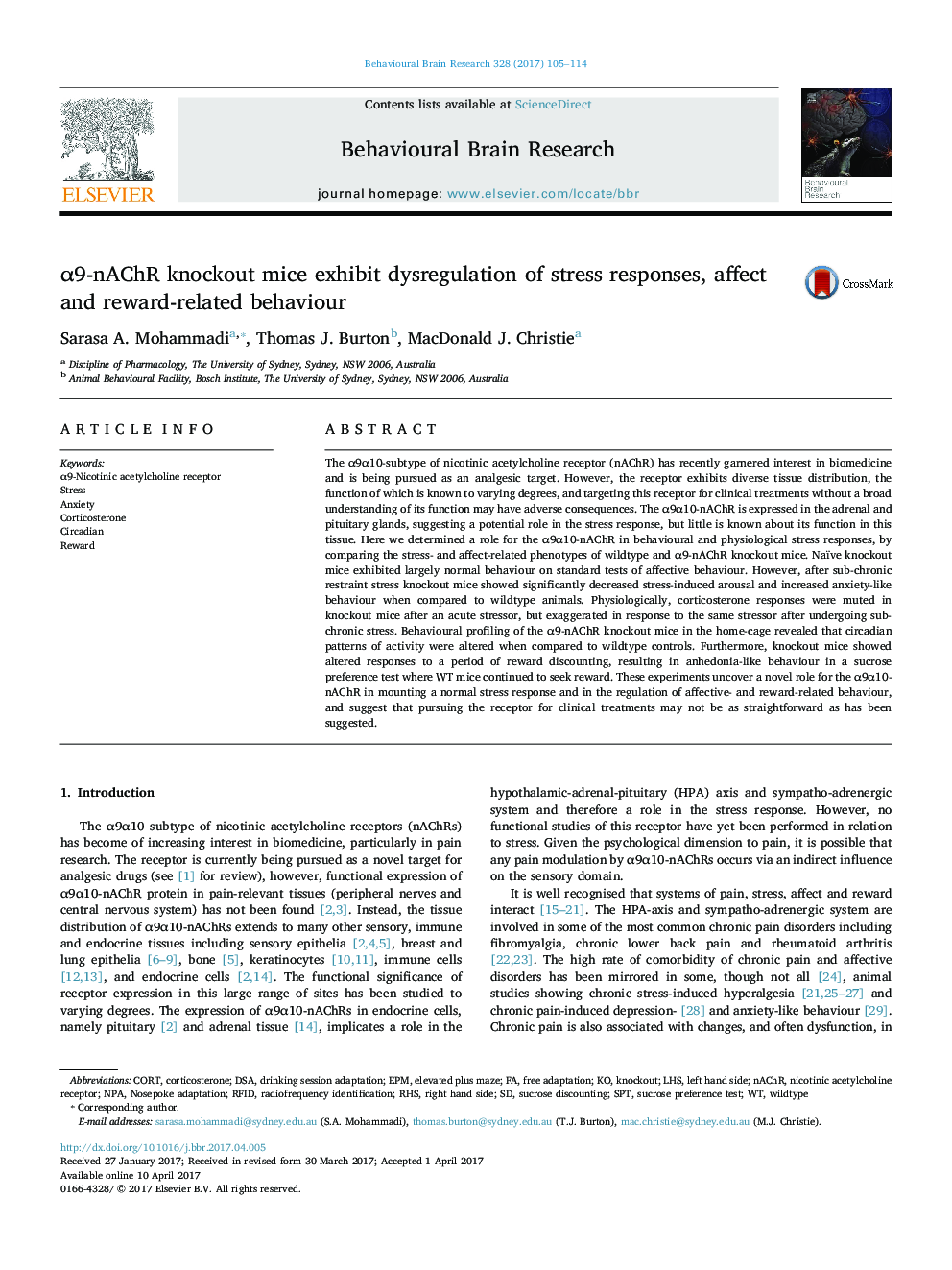| Article ID | Journal | Published Year | Pages | File Type |
|---|---|---|---|---|
| 5735157 | Behavioural Brain Research | 2017 | 10 Pages |
â¢Affective behaviour of α9-nAChR knockout mice is normal in naïve states but altered after stress.â¢Î±9-nAChR knockout mice have dysregulated corticosterone responses to stress.â¢Home-cage circadian patterns of activity are significantly altered in α9-nAChR knockout mice.â¢Î±9-nAChR knockout mice exhibit anhedonia-like behaviour after reward withdrawal.
The α9α10-subtype of nicotinic acetylcholine receptor (nAChR) has recently garnered interest in biomedicine and is being pursued as an analgesic target. However, the receptor exhibits diverse tissue distribution, the function of which is known to varying degrees, and targeting this receptor for clinical treatments without a broad understanding of its function may have adverse consequences. The α9α10-nAChR is expressed in the adrenal and pituitary glands, suggesting a potential role in the stress response, but little is known about its function in this tissue. Here we determined a role for the α9α10-nAChR in behavioural and physiological stress responses, by comparing the stress- and affect-related phenotypes of wildtype and α9-nAChR knockout mice. Naïve knockout mice exhibited largely normal behaviour on standard tests of affective behaviour. However, after sub-chronic restraint stress knockout mice showed significantly decreased stress-induced arousal and increased anxiety-like behaviour when compared to wildtype animals. Physiologically, corticosterone responses were muted in knockout mice after an acute stressor, but exaggerated in response to the same stressor after undergoing sub-chronic stress. Behavioural profiling of the α9-nAChR knockout mice in the home-cage revealed that circadian patterns of activity were altered when compared to wildtype controls. Furthermore, knockout mice showed altered responses to a period of reward discounting, resulting in anhedonia-like behaviour in a sucrose preference test where WT mice continued to seek reward. These experiments uncover a novel role for the α9α10-nAChR in mounting a normal stress response and in the regulation of affective- and reward-related behaviour, and suggest that pursuing the receptor for clinical treatments may not be as straightforward as has been suggested.
Graphical abstractDownload high-res image (102KB)Download full-size image
